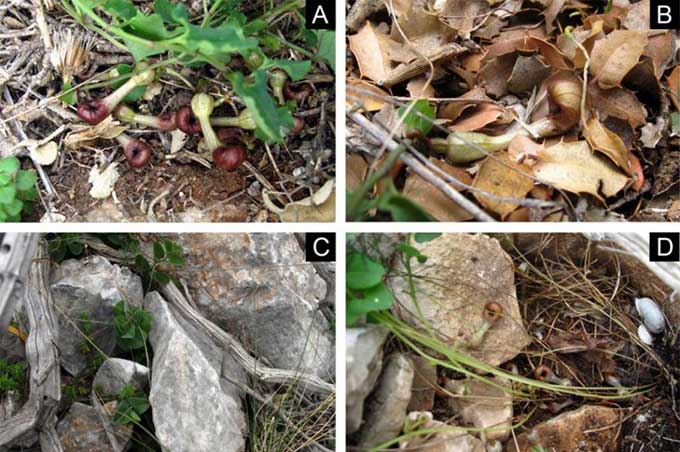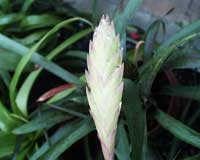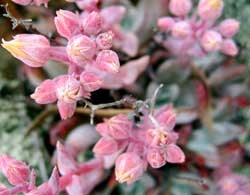Biologists discover a previously unknown flower species in Greece with a unique “deceptive” pollination strategy.
According to a description published in the journal Frontiers in Ecology and Evolution on May 21, the new plant species named Aristolochia microstoma has evolved over millions of years to develop flowers that emit a foul odor resembling that of rotting insect corpses, in order to attract a specific fly species scientifically known as Megaselia scalaris, commonly referred to as the coffin fly, which lays its eggs inside the bodies of dead insects to ensure that the larvae have a plentiful food source upon hatching.

Aristolochia microstoma specimen discovered in Greece. (Photo: T. Rupp/B. Oelschlägel/K. Rabitsch).
However, A. microstoma is not a carnivorous plant; instead, it lures female flies for the purpose of pollination.
“Our discovery is the first known case of a flower capable of deceiving pollinators by mimicking the scent of dead insects,” emphasized Professor Stefan Dötterl from the University of Salzburg in Austria, the lead author of the study.
In nature, only 4-6% of plants can mimic the scent or shape of other species to attract pollinating animals, including many members of the Aristolochia genus (birthwort).
“Aristolochia is a large plant group containing over 550 species worldwide, most commonly found in tropical and subtropical regions,” added Professor Christoph Neinhuis from the Botanical Garden of Dresden University of Technology in Germany, a co-author of the study.
A detailed analysis of the scent compounds in A. microstoma flowers revealed that it contains 16 volatile substances, including several nitrogen-containing molecules, sulfur, oligosulfides, and notably alkylpyrazines, a compound rarely produced by flowering plants. Scientists also identified the presence of 2,5-dimethylpyrazine, a compound with a scent reminiscent of rice or roasted peanuts.
Previous studies suggested that A. microstoma was pollinated by insects living on leaves, such as ants. The new findings indicate that this is incorrect; instead, the primary pollinator is the coffin fly Megaselia scalaris.





















































